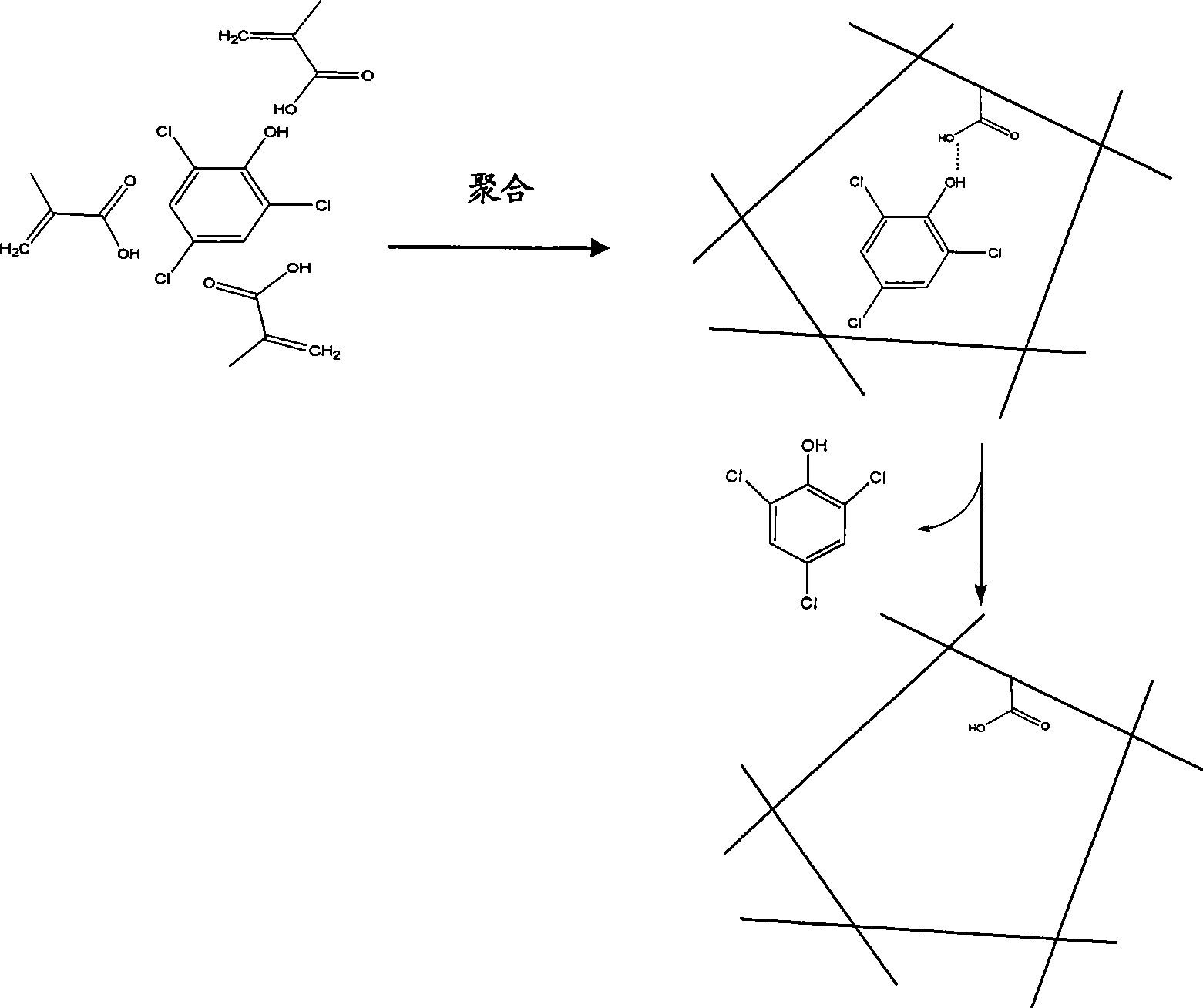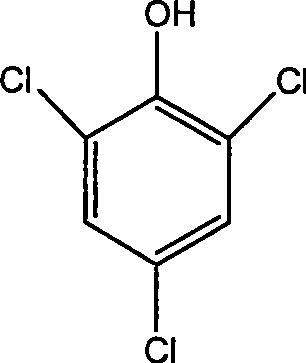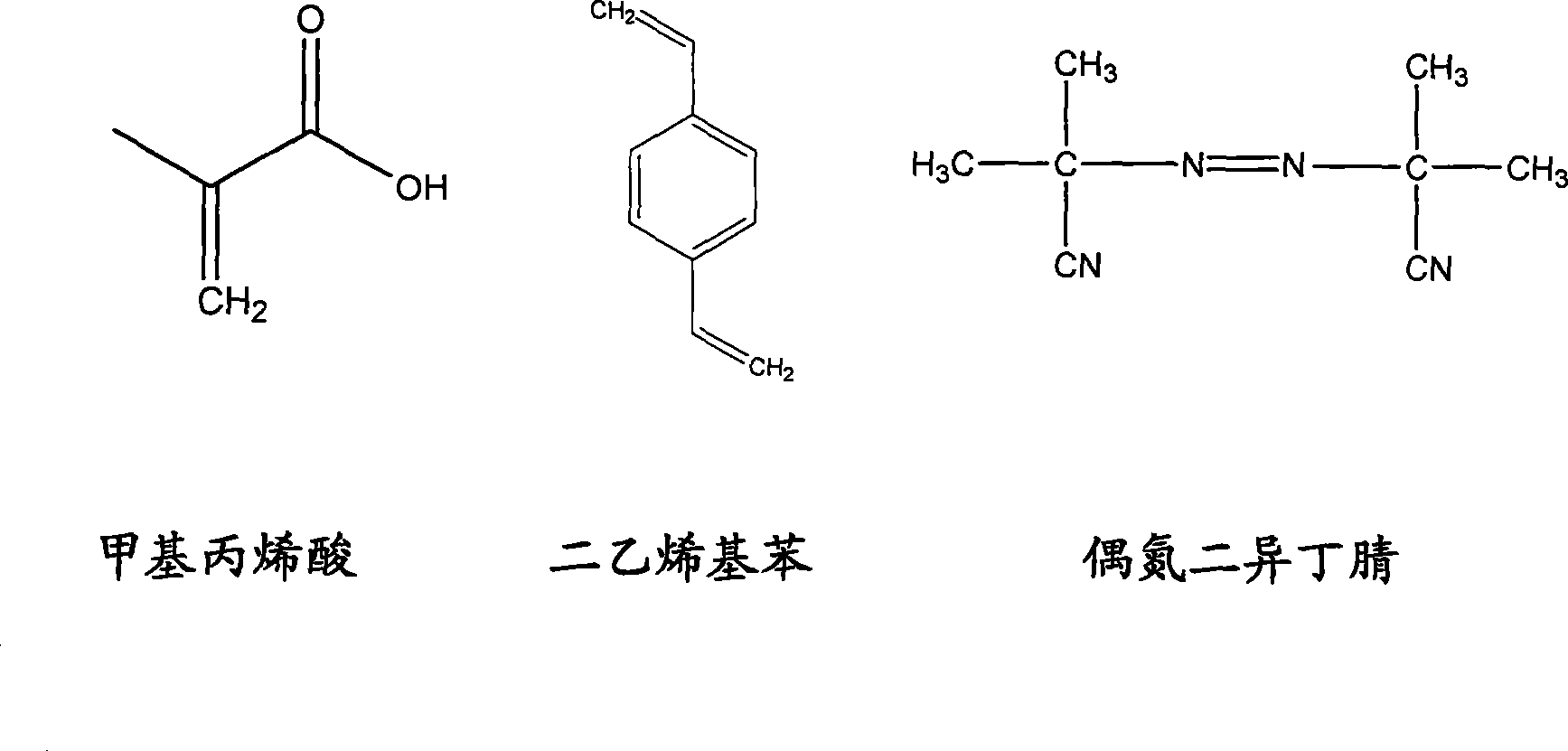2,4,6-trichlorophenol molecular imprinting microsphere polymer
A technology for imprinting polymers and trichlorophenol molecules, which is applied in two fields, can solve the problems of non-uniform binding sites, affecting the separation effect, and excessively wide chromatographic peaks, so as to avoid non-selective adsorption, expand the application field, The effect of high adsorption selectivity
- Summary
- Abstract
- Description
- Claims
- Application Information
AI Technical Summary
Problems solved by technology
Method used
Image
Examples
Embodiment 1
[0051] With 2,4,6-trichlorophenol as template molecule, toluene-acetonitrile mixed solvent (1:3, v / v) as solvent, methacrylic acid as functional monomer, divinylbenzene as cross-linking agent, azo Diisobutyronitrile is an initiator, template molecule: functional monomer: crosslinking agent: initiator=1:4:20:0.66 (molar ratio), thermal initiation polymerization forms molecularly imprinted microsphere polymer, and this polymer has It has obvious specific adsorption, and its maximum adsorption capacity for 2,4,6-trichlorophenol as a template molecule is 350.35 mg / g.
Embodiment 2
[0053] With 2,4,6-trichlorophenol as the template molecule, the mixed solvent of toluene acetonitrile (1:3, v / v) as the solvent, 4-vinylpyridine as the functional monomer (4-VP), divinylbenzene As a cross-linking agent, azobisisobutyronitrile is an initiator, template molecule: functional monomer: cross-linking agent: initiator = 1:4:20:0.66 (molar ratio), thermally induced polymerization to form molecularly imprinted microspheres Polymer, the particle size of this polymer ranges from 2.5 to 5.0 μm, and the maximum adsorption capacity is 272.83 mg / g.
[0054] II. Selection of crosslinking agent
Embodiment 3
[0056] With 2,4,6-trichlorophenol as template molecule, toluene / acetonitrile mixed solvent (1:3, v / v) as solvent, methacrylic acid as functional monomer, divinylbenzene as crosslinking agent, coupling Azodiisobutyronitrile is an initiator, template molecule: functional monomer: crosslinking agent: initiator=1:4:20:0.66 (molar ratio), thermally induced polymerization to form a molecularly imprinted microsphere polymer, this polymer It has obvious specific adsorption, and its maximum adsorption capacity for 2,4,6-trichlorophenol as a template molecule is 350.35 mg / g.
PUM
| Property | Measurement | Unit |
|---|---|---|
| particle diameter | aaaaa | aaaaa |
| specific surface area | aaaaa | aaaaa |
| particle diameter | aaaaa | aaaaa |
Abstract
Description
Claims
Application Information
 Login to View More
Login to View More - R&D
- Intellectual Property
- Life Sciences
- Materials
- Tech Scout
- Unparalleled Data Quality
- Higher Quality Content
- 60% Fewer Hallucinations
Browse by: Latest US Patents, China's latest patents, Technical Efficacy Thesaurus, Application Domain, Technology Topic, Popular Technical Reports.
© 2025 PatSnap. All rights reserved.Legal|Privacy policy|Modern Slavery Act Transparency Statement|Sitemap|About US| Contact US: help@patsnap.com



